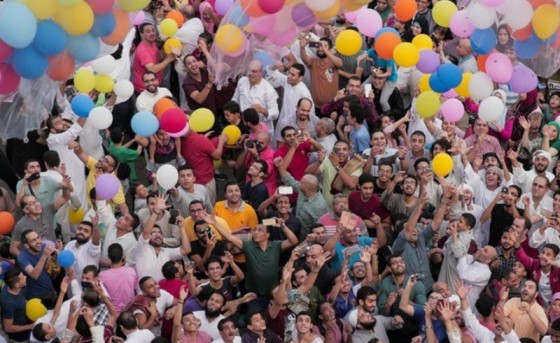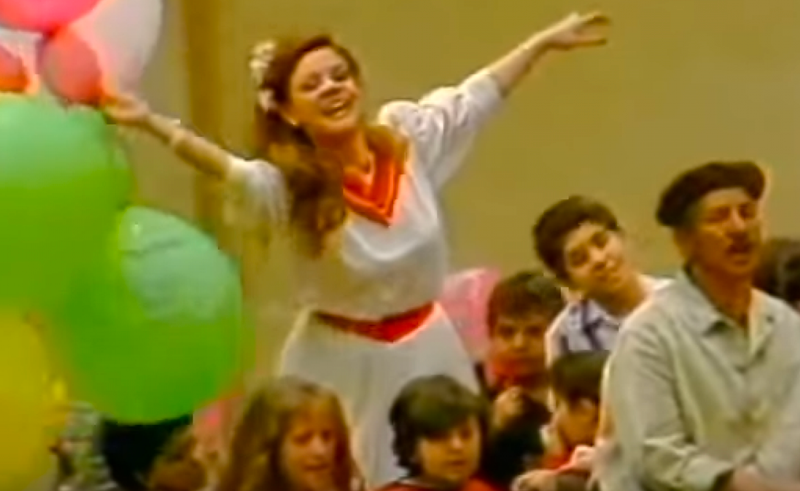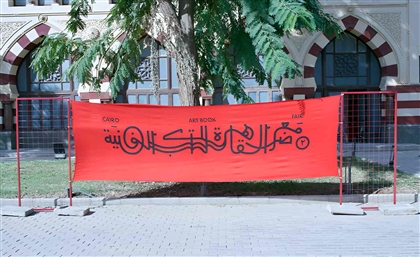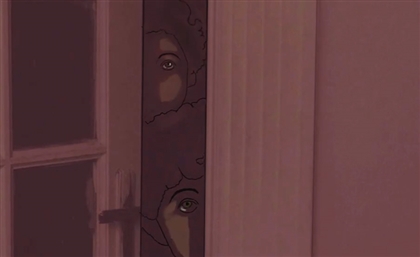Who is Saad Nabeeha? The Conspiracy Behind Our Favourite Eid Anthem
The man may be a figment of our collective imagination, but that doesn’t stop him from being a source of joy, food for fantasy and a nationalist symbol.

Twice a year, on every ‘laylat Eid’ (the night before Eid), as the streets fill up with balloons and hair spray fumes seep out from behind salon doors, we begin to ponder who exactly Saad Nabeeha is. Who is this man who, according to the lyrics of Safaa Abu Saoud’s festive hit ‘Ahlan Bel Eid’, brings joy to our Eid? Why isn’t he in our middle school Egyptian history textbooks? The man has become an enigma, whose celebratory impact we’ve learned to celebrate every Eid.
At some point, Saad Nabeeha became so deeply ingrained in our culture that he became unquestionable. As a child, you couldn’t simply ask your parents who this Saad Nabeeha is; it was a perceived act of great disrespect against the reason for our Eid joy. Since no one asked, Saad Nabeeha grew to be the ginormous elephant room everyone thinks about but no one addresses.
Every few years, though, a handful of brave souls ask the forbidden question and a generation’s curiosity is satiated. Last Eid, in April, the outrage was particularly widespread, as Safaa Abu Saoud was invited to play a reiteration of her magnum opus as part of the celebration at the New Administrative Capital. Excited to finally see the icon Saad Nabeeha on national TV, a few daring Twitter users performed the debaucherous act of asking about the enigma yet again, and Generation Z, myself included of course, were left appalled by the truth.
-02271ed2-9d7e-4795-9470-541e90ffe3df.png) As it turns out, Saad Nabeeha does not exist - not even in the realm of fiction. The mythical icon is simply the result of a misheard lyric. The actual lyrics of the song go like this:
As it turns out, Saad Nabeeha does not exist - not even in the realm of fiction. The mythical icon is simply the result of a misheard lyric. The actual lyrics of the song go like this:
العيد فرحة
و أجمل فرحة
تجمع شمل قريب وبعيد
سعدنا بيها
بيخليها
ذكرى جميلة لبعد العيد
Rather than a mythical figure that brings our happiness, the classic single instead urges us to let our own happiness be the bearer of long-lasting jolly memories that last long after the Eid holiday ends. In a way, the song is symbolic; urging celebrators to be the source of their own happiness, rather than depending on someone else. Surely that is the meaningful message this children’s song intends to send.
‘Ahlan Bel Eid’ was released in 1982, composed by Gamal Salama and sung, of course, by the cheery Safaa Abu Saoud. Said to be inspired by the ultimate Eid anthem, Om Kolthoum’s ‘Ya Leilet El Eid’, the song was meant to be a more child-friendly celebratory anthem of the occasion.
According to Egyptian media, at the time, Gamal Salem explained the intention behind the song, “I always listened to the song Ya Leilet El eid by Umm Kulthum, and it was the only song that was repeated during the holiday, and I used to see that it was intended for adults, and I asked myself why there was no such song for children about the holiday.”
Regardless of the song’s actual intention, and the found non-existence of Saad Nabeeha, the emergence of conspiracy theories surrounding the Nabeeha puzzle is always fun - and often telling of the state of our society. For example, some listeners found the existence of some Eid-dedicated prophet amid the song’s lyrics - sort of like a Santa Claus for Muslims.
There are more theories, including one that framed Saad Nabeeha as a feminist icon who, rather than being referred to with his father’s name as his last, put his mother’s. Oh how lucky Mrs Nabeeha is. In the meantime, some people, those more attuned to the little things in life, saw a more humble Nabeeha, pinning him as the balloon seller on Eid mornings. My personally adopted theory was that ‘Saad’, translating into joy, referred to the joy our Eid celebrations bring the prophet. It doesn’t sound that far off in retrospect.
Given that this debate re-emerges every couple of years, it’s gotten to a point where a good percentage of the population recognise that there is no Saad Nabeeha, and yet his name continues to flood social media platforms every Eid. Through analyses of users’ mentions of the icon, I’ve pinned this down to three reasons:
Number one: Nostalgia. If Saad Nabeeha was a thing when we were eight years old and listening to Abu Saoud with all the joy our little hearts could possibly hold, Saad Nabeeha is a thing now. It doesn’t matter if we know the truth - we choose Saad Nabeeha.
 Secondly, as is clear from the above Tweet, Saad Nabeeha is an Egyptian through and through. In a way, because all these theories are uniquely the work of Egyptian children’s fantastical ideas, the idol is a symbol of nationalism against the infiltration of external influences. In this case, the external influence is Jordanian children’s TV channel Toyor El Jannah’s recent song ‘Assana Men Owadoh’.
Secondly, as is clear from the above Tweet, Saad Nabeeha is an Egyptian through and through. In a way, because all these theories are uniquely the work of Egyptian children’s fantastical ideas, the idol is a symbol of nationalism against the infiltration of external influences. In this case, the external influence is Jordanian children’s TV channel Toyor El Jannah’s recent song ‘Assana Men Owadoh’.
Lastly, Saad Nabeeha has become a crutch. As Eid approaches, if your life’s going well, you express love for the mythical saviour. If your life isn’t, you blame Saad Nabeeha (the word “blame” here refers to, most prominently, cursing him). It’s not necessarily an unhealthy coping mechanism that allows listeners to externalise their locus of control; it’s just a way for people to let off steam. In our youth, Nabeeha is the image of joy and as we grow up, he absorbs our angst.
What Saad Nabeeha has grown to represent, despite never really existing, is a rallying concept for Egyptians from all walks of life. His discovery is a recurring phenomenon that plays across generations, repeating itself to no end. From a bringer of smiles to a coping mechanism, a national icon, a sentimental connection to our past, or even just a fun quirky caption to our Eid ‘fit pics’, the enigma has become a cornerstone of Egyptian Eid culture.
- Previous Article Italian-Palestinian Duo No Input Debuts Eponymous Electro EP
- Next Article Travel Across History on Egypt's Most Iconic Bridges
Trending This Week
-
Dec 12, 2025



























